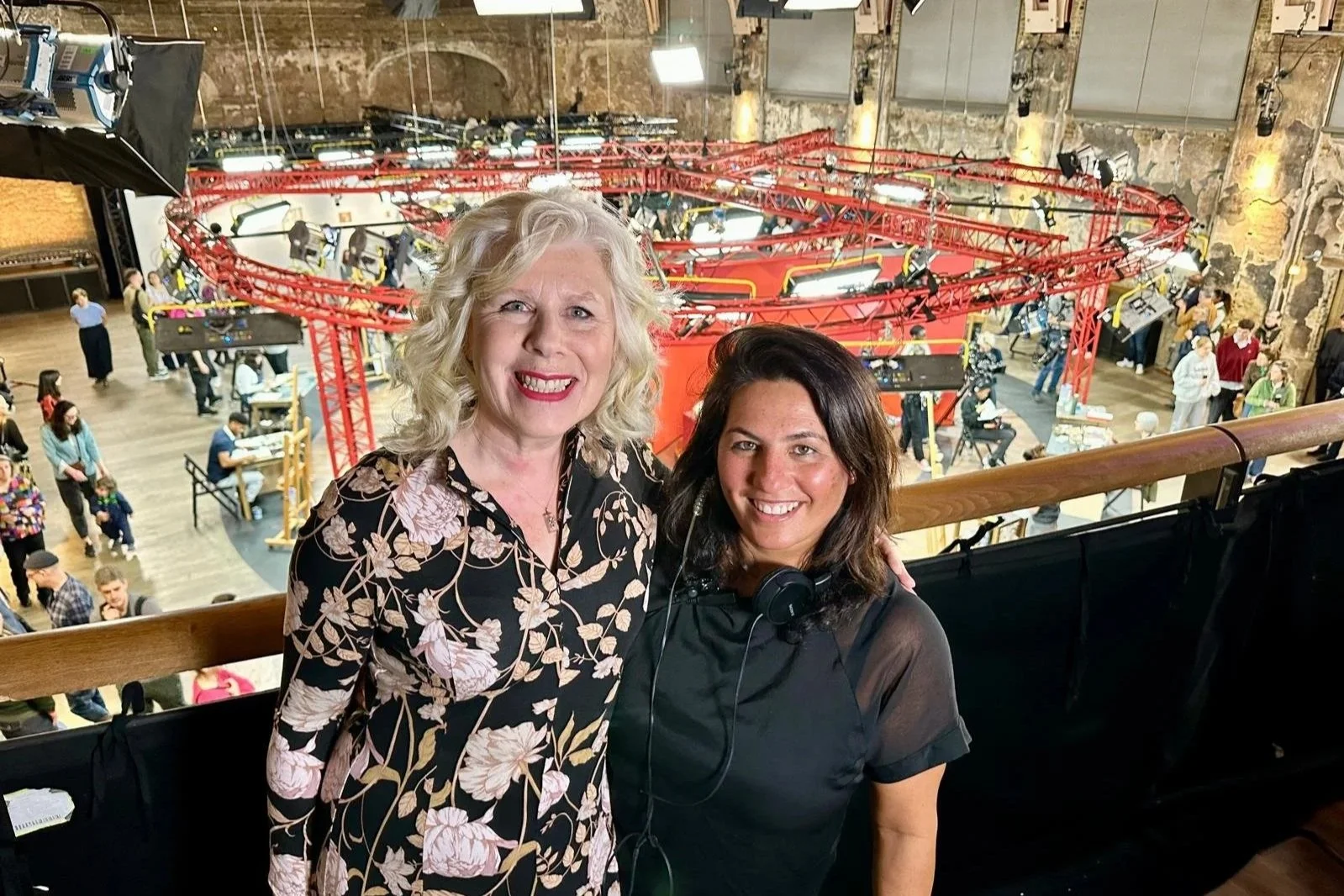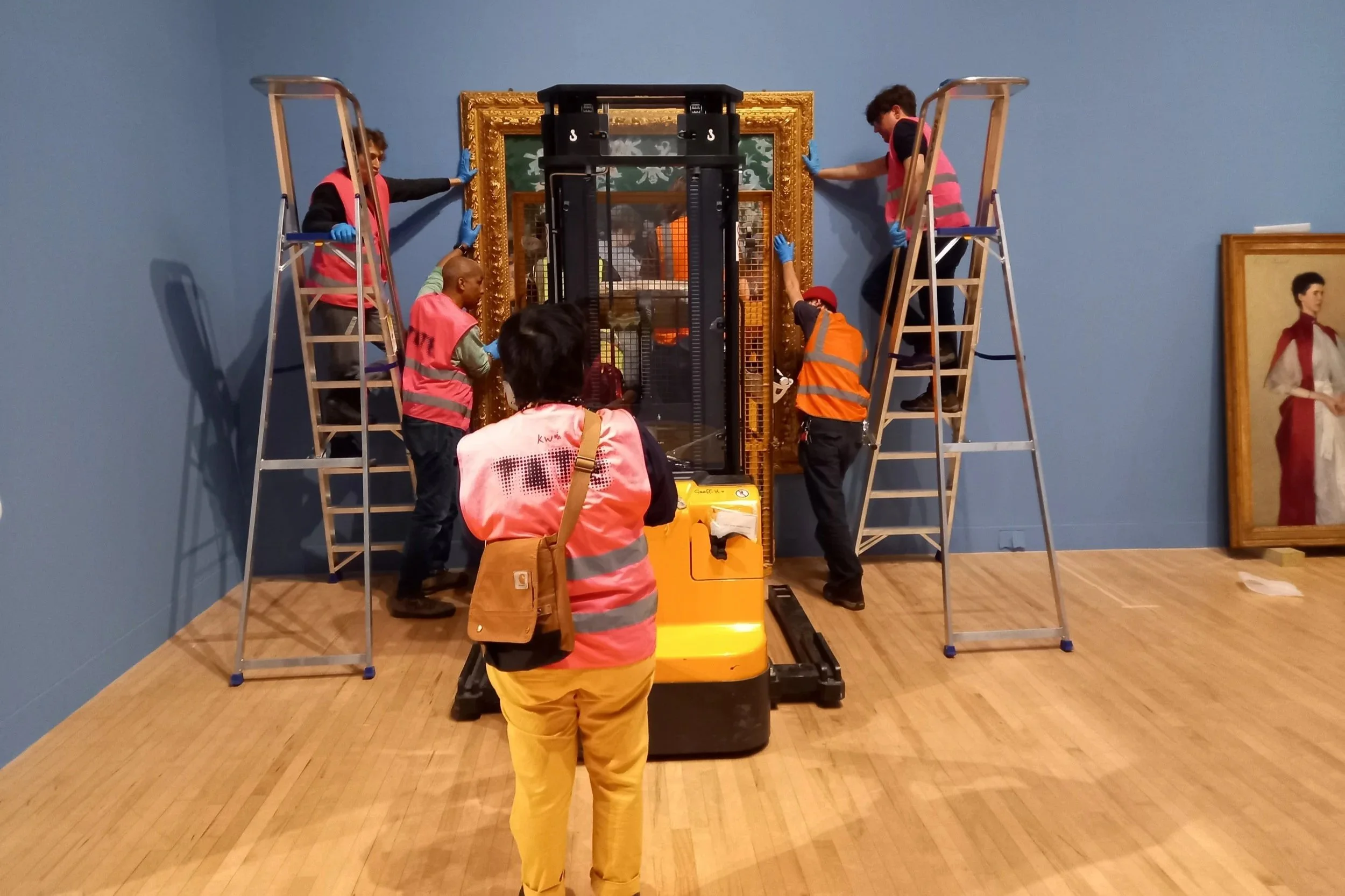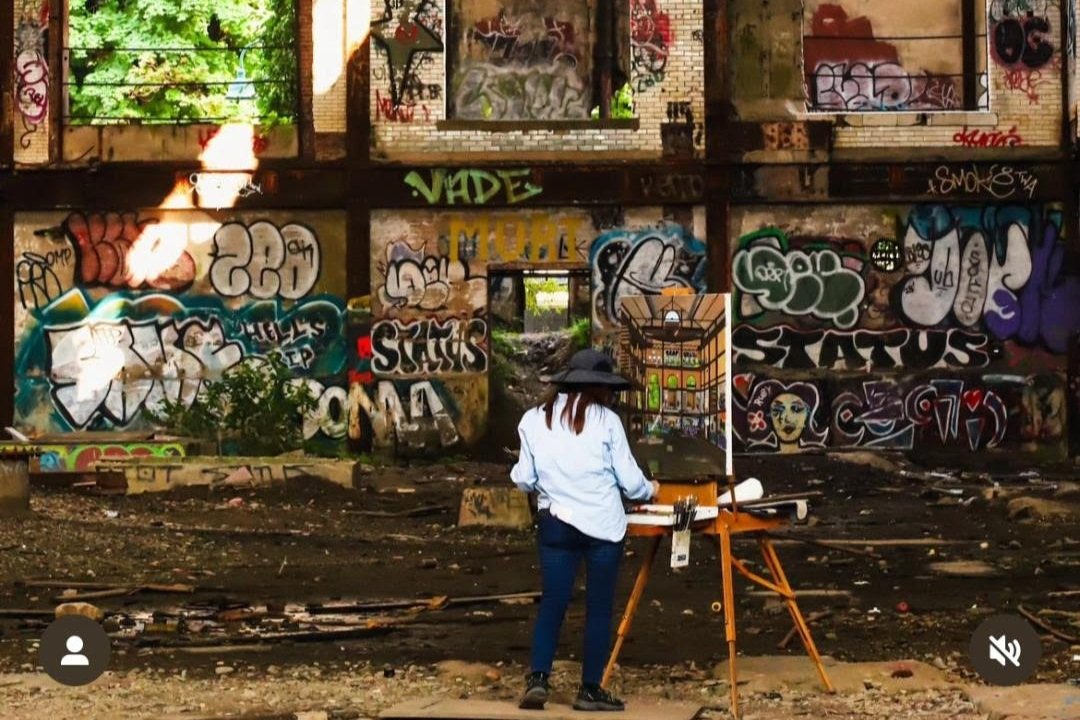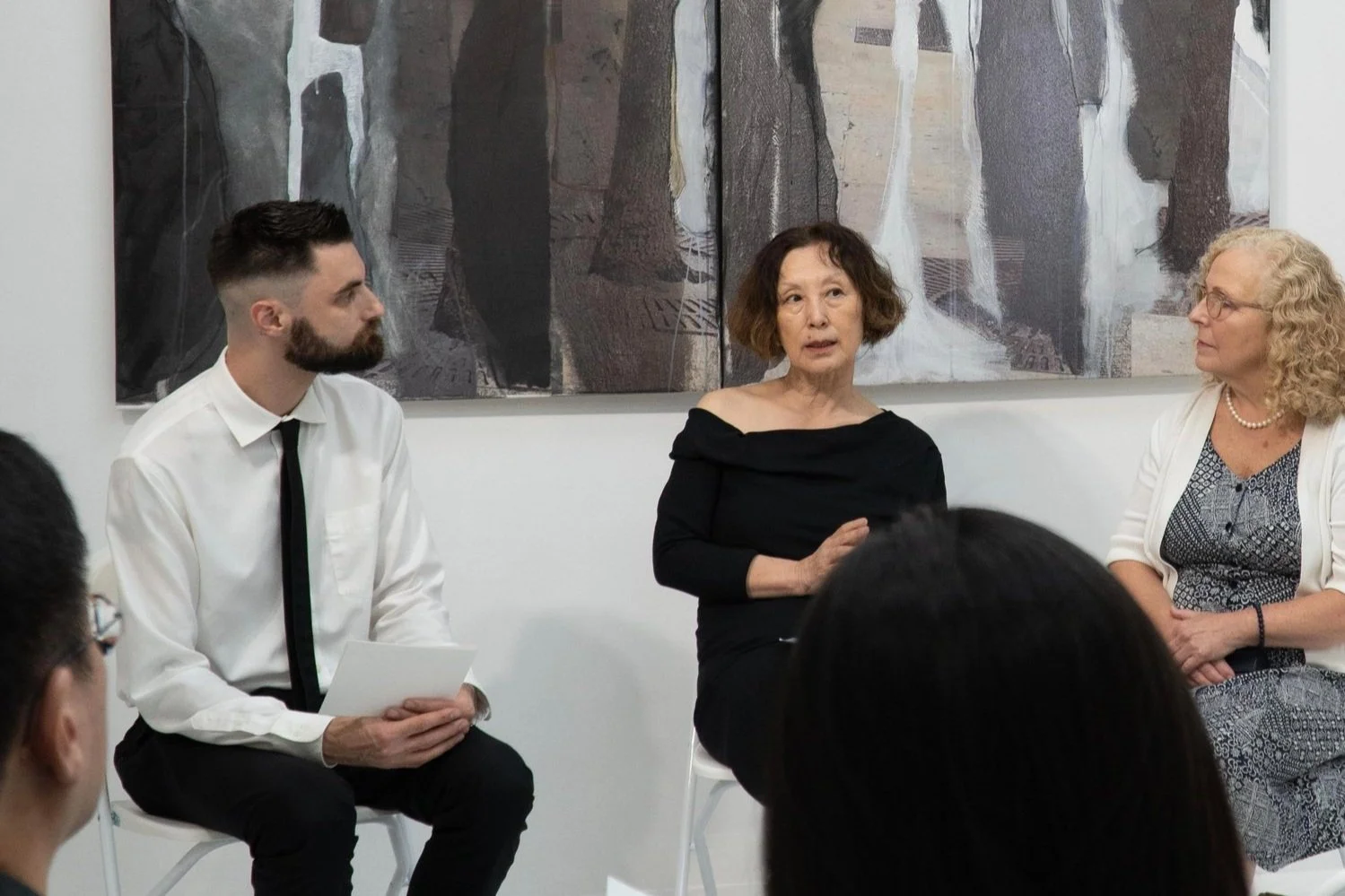An interview crafted with each of the semi-finalists from Sky Portrait Artist of the Year Season 12, 2025. After filming the semi-finals I had a lovely chat with each of the artists about their experience on the show. Read on to hear their thoughts and find out more on our exciting upcoming group show in London.
Read MoreIntroducing Nelda Sale, the Series Editor for Sky Art’s Portrait Artist of the Year, who has been on set with the incredible Storyvault team since series 3. Read up on what happens in the lead up to the series launch and during filming. Nelda brings her insightful and experienced perspective to the whole process and to my experience as a featured artist on Sky Art’s Portrait Artist of the Year 2025.
Read MoreAfter almost a decade in Australian and London galleries, Johanna Nulley founded Glasshouse Contemporary in East London just last year. Glasshouse is an independent gallery that operates at a grass-roots level. Johanna and her partner Jon are building real heart and soul into the way they run the gallery and how they connect with their clients and artists. Highlighting some incredible names such as Benjamin MacGregor and Martha Zmpounou, the gallery is now embarking on a thriving and blossoming second year.
Read MoreMeet Mikei Hall, a living legend in the art world. For the past three decades, he's been at the heart of the Tate, personally handling almost every kind of art imaginable – from controversial pieces like elephant dung to priceless Old asters. Today, we're pulling back the curtain for an intimate chat, diving into the incredible technical skills and precision it takes to be a senior art handling specialist.
Read MoreMillie Jason Foster is the dynamic owner of the Gillian Jason Gallery in Marylebone, carrying on her grandmother and her mother's legacy, by championing women artists. With a background in investment banking and tech, Millie brings such a fresh and unique perspective to the art-collecting experience and to the role of the gallery. She's passionate about bringing emerging artists into the spotlight, recognising the transformative power of female art to shape perception and drive change.
Read MoreMeet Marguerite Nugent, the driving force as Cultural Director at Culture Coventry Trust. Beyond overseeing the city's cherished arts and heritage venues, she's deeply invested in cultivating the next wave of creative professionals, ensuring opportunities for young people from all walks of life. Her passion lies at the intersection of preserving culture and building a vibrant future for the arts.
Read MoreI had a chat with renowned art historian and curator, Jo Baring. Jo is a passionate advocate for making art accessible to everyone and equally for supporting emerging artists, a mission she champions through her work as Director of The Ingram Collection, her critically acclaimed podcast series "Sculpting Lives," and her insightful writings for national publications and museums. With an impressive background that includes a former directorship at Christie's UK and judging prestigious art prizes, Jo brings a wealth of knowledge and a fresh perspective to the world of art. Her dedication to fostering a love for art in all is truly inspiring.
Read MoreI'm delighted to share my recent conversation with the incredibly insightful Wilma Geerts. As the proud owner of the WG gallery in the Netherlands, Wilma has a unique perspective on portraiture and the art world in the Netherlands, fostering connections between artists and enthusiasts alike. Her experience curating exhibitions and nurturing artistic talent offers a fascinating glimpse behind the scenes of the gallery space. Join us as we explore Wilma's journey, her vision for WG gallery, and her thoughts on the vibrant Dutch art scene.
Read More Lorna and I go back many years from our time in New York. I sat for a chat with her and co-founder, Rachael McNabb to talk about New Public, the cultural placemaking and public art agency they launched together in London in 2023. Turns out it’s a lot more than you’d expect from an art agency. They are women-owned and operated and strive for something deeper than simply winning a bid — they are on a mission to affect cultures at the root level through a full range of creative mediums.
Read MoreI was introduced to the lovely Yi Ting through a close friend. Yi Ting is an editorial assistant at Burlington Contemporary. She sat for a coffee with me and we talk about her background, her work at Burlington Contemporary, and her thoughts on the contemporary art scene in London.
Read MoreBased in Queens, New York, contemporary artist Omar Chacon, creates vibrant and dynamic paintings or should we call them sculptures? He is represented by four different galleries globally. Omar’s work is incredible and it’s a treat to speak with such an established artist. As you read on you’ll discover more about this beautiful human and his process.
Read MoreI was introduced to Jon by a good friend of mine at the Tate. He has over a decade of experience in his field and works regularly with all the big London art museums and galleries. He’s a passionate advocate for creating meaningful connections between audiences and art, with a focus on ethical practices and community collaboration. He designs learning programs and curates exhibitions that empower learners, amplify marginalised voices, and address representation gaps within collections. His work ultimately aims to foster a more inclusive and representative art world.
Read MoreMy friend Ko Smith, an artist based in Paris, and I go back to our New York days. He recently connected me with his friend Chan Changhao, who I'm excited to introduce to the blog. Chan works as an Art Handler and Installer at Galerie Templon in Paris, and today he shares details about his work with me.
Read MoreAccording to the New York Times, Valeri Larko is the self-proclaimed “Queen of Rust”. If only there was a way to let you all sit down for a chat with Valeri. She is an internationally accomplished artist who has been painting since the 80s. When you experience Larko’s art, you certainly leave feeling in awe of her technique and skills and intrigued to know more. But only after having the privilege of chatting with her, do you really get to understand the depth and meaning behind her and her work. I can’t wait to divulge. Read on, read on!
Read MoreA friend of mine mentioned her sister to me a few months back, she said she works with artists to collaborate on projects for brands. So, I got in touch with the lovely Lucy Clarke here, and we had a little chat about Art Agency work. Turns out she is a project manager at MTArt Agency and she has plenty to tell us about all the incredible artworks she get’s to work with.
Read MoreYorgos Kotsakis is the Gallery Manager at Galerie Templon in Paris. He was introduced to me by Ko Smith, my dear friend who is an incredible artist based in Paris. Yorgos very generously shared some time with me to tell me his story and reveal what it’s like to manage a Parisian gallery.
Read More17 years in the art world and counting; I’ve sat down for a chat with the gorgeous Gabriela Magaña, whom I met during my time in New York. Gaby has been the director of House of Gaga for the past 9 years. House of Gaga is a vibrant contemporary art gallery founded by Fernando Mesta, with locations in Mexico City, Los Angeles and Guadalajara. I asked her to tell me all about her incredible experience working in galleries and art museums around the world.
Read MoreRichard, Richard, Richard. Have you ever met someone who you just wish the whole world could meet? Richard Kathlean, is a dear old friend from New York… or Brooklyn to be exact. Picture a smiling, sweet, and highly successful TV producer who has a huge heart and a ginormous passion for art. Richard is hands down the most passionate and committed art collector I know - I’m talking wall to wall - he just doesn’t have enough space to hang it all. He is absolutely my go-to for art advice. So here’s our chat about the life of an art collector…
Read MoreIntroducing Steve Hanson, an old friend from New York. We met a long long time ago, well before either of us got our careers going. Imagine a tall, smiling and really lovely human who always seems to give you the feeling he has all the time in the world to have a lovely chat with you. Steve was actually one of the first people to ever purchase one of my oil painting works. I had a good long chat with him about his career within the art conservation world.
Read MoreWelcome to the official Studio BAE blog!
Read More



















